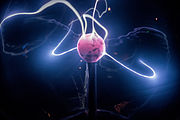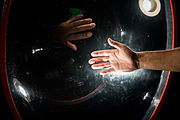
The Royal Mile is a succession of streets forming the main thoroughfare of the Old Town of the city of Edinburgh in Scotland. The term was first used descriptively in W. M. Gilbert's Edinburgh in the Nineteenth Century (1901), describing the city "with its Castle and Palace and the royal mile between", and was further popularised as the title of a guidebook by R. T. Skinner published in 1920, "The Royal Mile (Edinburgh) Castle to Holyrood(house)".

Sir Patrick Geddes was a British biologist, sociologist, Comtean positivist, geographer, philanthropist and pioneering town planner. He is known for his innovative thinking in the fields of urban planning and sociology.

William Henry PlayfairFRSE was a prominent Scottish architect in the 19th century, who designed the Eastern, or Third, New Town and many of Edinburgh's neoclassical landmarks.
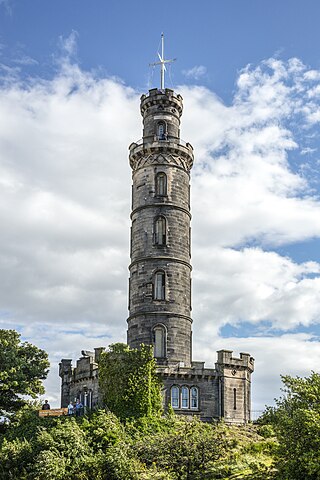
The Nelson Monument is a commemorative tower in honour of Vice Admiral Horatio Nelson, located in Edinburgh, Scotland. It is situated on top of Calton Hill, and provides a dramatic termination to the vista along Princes Street from the west. The monument was built between 1807 and 1816 to commemorate Nelson's victory over the French and Spanish fleets at the Battle of Trafalgar in 1805, and his own death at the same battle. In 1852 a mechanized time ball was added, as a time signal to shipping in Leith harbour. The time ball is synchronized with the One O'Clock Gun firing from Edinburgh Castle. The monument was restored in 2009.

Calton Hill is a hill in central Edinburgh, Scotland, situated beyond the east end of Princes Street and included in the city's UNESCO World Heritage Site. Views of, and from, the hill are often used in photographs and paintings of the city.
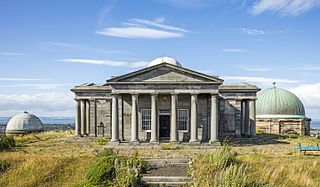
The City Observatory was an astronomical observatory on Calton Hill in Edinburgh, Scotland. It is also known as the Calton Hill Observatory.

The Royal Observatory, Edinburgh (ROE) is an astronomical institution located on Blackford Hill in Edinburgh. The site is owned by the Science and Technology Facilities Council (STFC). The ROE comprises the UK Astronomy Technology Centre (UK ATC) of STFC, the Institute for Astronomy of the School of Physics and Astronomy of the University of Edinburgh, and the ROE Visitor Centre.

The College Des Ecossais was founded by Patrick Geddes in 1924 as an international teaching establishment located in Montpellier, in the south of France.

John Duncan (1866–1945) was a Scottish Symbolist painter. His work is known for referencing Arthurian legends, Celtic folklore, and other mythological subjects.

Mills Observatory is the first purpose-built public astronomical observatory in the UK, located in Dundee, Scotland. Built in 1935, the observatory is classically styled in sandstone and has a distinctive 7 m dome, which houses a Victorian refracting telescope, a small planetarium, and display areas. The dome is one of two made from papier-mâché to survive in the UK, the other being at the Godlee Observatory.
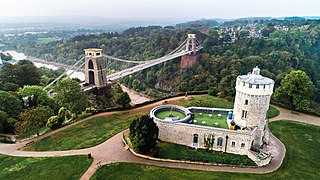
Clifton Observatory is a former mill, now used as an observatory, located on Clifton Down, close to the Clifton Suspension Bridge, Bristol, England.

Ramsay Garden is a block of sixteen private apartment buildings in the Castlehill area of Edinburgh, Scotland. They stand out for their red ashlar and white harled exteriors, and for their prominent position, most visible from Princes Street.
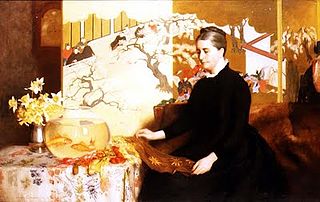
James Cadenhead was a Scottish landscape and portrait painter.

The Edinburgh Astronomical Institution was founded in 1811 and wound up in 1847. It was instrumental in the foundation of the Royal Observatory, Edinburgh in 1822. The Institution raised funds, mostly by member subscription, to create three departments: A scientific observatory with an observer was to be under the control of the professors of mathematics, philosophy and astronomy of the University of Edinburgh, a popular observatory was to provide general instruction and amusement and a "physical cabinet" would comprise books, globes, meteorological and other instruments.
Maria Theresa Short was a Scottish entrepreneur who increased public access to scientific equipment in Edinburgh in the 19th century. She was born and died in Edinburgh.

William West (1801–61) was an English oil painter and watercolourist who was a member of the Bristol School of artists. He was also the builder of the Clifton Observatory at Clifton Down, Bristol.

Dumfries Museum and Camera Obscura, located in Dumfries in Dumfries & Galloway, is the largest museum in the region. The museum has extensive collections relating to local and history from the pre-historic era. The museum also has the world's oldest working Camera Obscura. Admission is free, however a small fee applies for the Camera Obscura.

The Witches' Well is a monument to accused witches burned at the stake in Edinburgh, Scotland, and is the only one of its kind in the city.
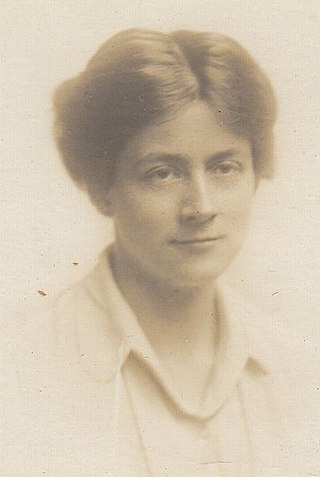
Norah Geddes (1887–1967) was a Scottish landscape designer.
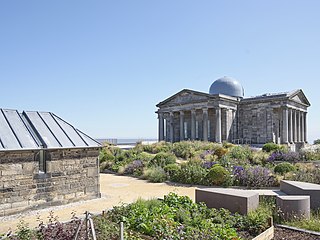
Collective is a contemporary art centre in Edinburgh, Scotland. It is situated on Calton Hill, in the former City Observatory and City Dome site. It offers a programme of exhibitions, guided walking tours, audio walking tours, and events.

